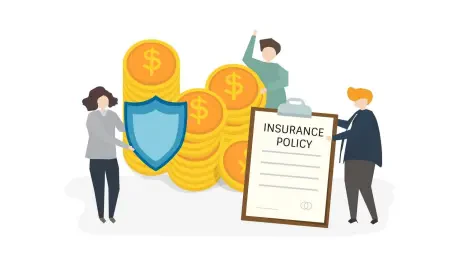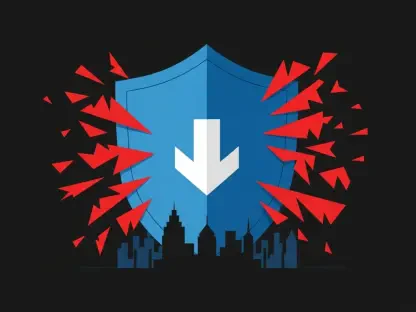Amidst the aftermath of devastating fires in Los Angeles County, survivors have found themselves grappling not just with physical damage but also with bureaucratic hurdles as they attempt to secure compensation for smoke damage through insurance claims. As these individuals navigate recovery, they have raised concerns about delays in the claims process attributed to State Farm, a major insurance provider. This situation has garnered attention from public officials, consumer advocates, and the California Insurance Commissioner, who are scrutinizing the company’s practices.
Rising Tensions
Survivors and Allegations
Rossana Valverde, a resident of Pasadena, exemplifies the struggle facing many survivors of the January fires in Los Angeles County. She contends with toxins like arsenic and lead contaminating her home. Despite partial compensation from State Farm, Valverde has encountered persistent challenges in obtaining timely responses and effective assistance from the insurer. Her story mirrors that of numerous claimants in the region, who are collectively voicing frustrations over protracted insurance processes. These challenges have ignited both public concern and legislative attention, prompting calls for deeper inquiry into State Farm’s operations.
The delays in processing smoke damage claims have intensified scrutiny on State Farm, leading many survivors to question the company’s commitment to addressing their needs. As these individuals await resolutions, frustrations are mounting, prompting broader dialogues on the adequacy and efficiency of the insurer’s practices. The collective grievances of the affected highlight systemic issues within State Farm’s approach, casting a shadow over its relationships with policyholders.
The Role of State Lawmakers and Advocates
Public dissatisfaction has escalated to legislative action, as three state lawmakers have joined forces with fire survivors in lobbying Insurance Commissioner Ricardo Lara for a comprehensive investigation into State Farm’s methodology for assessing and managing smoke damage claims. Consumer advocates have also voiced their concerns, amplifying the plight of claimants and suggesting potential negligence on State Farm’s part amid the backdrop of a proposed rate hike by the insurer.
These efforts underscore a concerted push for transparency and accountability, as stakeholders strive to uncover and address any discrepancies in State Farm’s handling of smoke damage claims. Simultaneously, consumer advocates are spotlighting the need for robust checks and balances, challenging the insurer to prioritize consumer protection and adherence to just practices. As Commissioner Lara takes these concerns under advisement, there is increasing anticipation that his findings may serve as a catalyst for broader reforms within the industry.
Rate Hike Controversy
Proposed Rate Increase
A parallel issue feeding into the scrutiny of State Farm is its bid for a 17% increase in homeowner rates. This proposal has sparked significant backlash among Los Angeles County fire survivors, who view it as a stark contrast to their unresolved claims and ongoing difficulties with claiming compensation. As these individuals wrestle with bureaucratic obstacles, the proposed rate hike has fueled indignation, prompting calls for Commissioner Lara’s arbitration.
For Commissioner Lara, the decision to accede to State Farm’s rate increase request hinges on the insurer’s responsiveness and adaptability to the concerns of policyholders. His meticulous evaluation of State Farm’s smoke damage claims protocol and customer engagement strategies will be integral in shaping the trajectory of the rate hike discourse. Both critics and proponents await a resolution that resonates with fairness, foresight, and ultimately, consumer empowerment.
State Farm’s Defense
Under increasing pressure, State Farm has sought to defend its stance by highlighting extensive payments—totaling over $3.12 billion—made toward fire claims. Aiming to demonstrate diligence and commitment, Sevag Sarkissian, a spokesperson for State Farm, has accentuated the ongoing initiatives undertaken by the company to assist customers in navigating post-disaster recovery. Nevertheless, despite such efforts, skepticism among claimants persists concerning the effectiveness and expediency of the insurer’s measures.
State Farm’s insistence on proactive engagement with affected regions is an attempt to build a bridge of trust and accountability. Yet, the visible disconnect between policyholder expectations and actual operational delivery continues to foster dissatisfaction and demand for clarifications. As the company’s actions undergo rigorous scrutiny both internally and externally, there is a shared consensus that State Farm’s strategies must evolve to align closely with the pressing needs of those they seek to serve.
Legal and Regulatory Aspects
Court Rulings and Implications
The complexity surrounding smoke damage claims has been further exacerbated by a decisive ruling from the California appeals court, which deemed wildfire debris insufficient in establishing direct physical loss or damage—a judgment that insurers, including State Farm, might use to contest claims validity. This interpretation has stoked fears among consumer advocates, who caution that it could undermine legitimate claims tied to smoke and debris impacts.
To counter these implications, consumer advocates are advising policyholders to secure comprehensive assessments validating smoke damage before initiating cleanup efforts. Such assessments are essential in preserving health and property values, empowering policyholders to substantiate their claims, even amidst initial resistance from insurance companies. As interpretation of the ruling continues to unfold, stakeholders are campaigning for a balanced approach that respects both regulatory frameworks and the reality of consumers’ experiences.
Commissioner Lara’s Investigation
Commissioner Ricardo Lara’s intervention represents a pivotal moment in the quest for robust, uniform standards in smoke damage remediation across the insurance industry. Tasked with investigating State Farm’s claims practices, Lara aims to chart a course toward transparency, equitable settlements, and consumer-centric policy frameworks. His inquiry holds transformative potential, promising to set precedents in insurance protocol that could reshape the landscape for handling disaster-related claims.
The commissioner’s proactive measures reflect growing demands for accountability and systematic fairness, both of which are critical in navigating the complexities that attend post-disaster insurance scenarios. By extending the investigation’s scope, Lara is poised to address broader challenges afflicting homeowners struggling with insurance claims, paving the way for a comprehensive, forward-facing strategy that safeguards consumer rights and optimizes insurer conduct.
Broader Context
Home Insurance Crisis
The ongoing dispute between State Farm and fire survivors accentuates a broader crisis within the home insurance sector, where consumers, insurers, and regulatory bodies are locked in a delicate balancing act. This scenario highlights the urgent call for procedural transparency, prompt claim resolutions, and equitable policy adjustments that effectively reconcile company viability with consumer protection.
The challenges facing survivors in Los Angeles County bring into sharp relief the pressing need for reform across the sector. As stakeholders focus on forging pathways that marry operational demands with accountability, a multifaceted approach that embraces technology, policy innovation, and consumer-centered practices emerges as essential to bridging the divide.
Legal, Consumer, and Company Dynamics
In the wake of the recent catastrophic fires in Los Angeles County, survivors face not only the daunting task of rebuilding their lives and properties, but also the intricate challenge of dealing with insurance claims. These claims aren’t just about the evident physical destruction but also cover damage caused by pervasive smoke. However, those seeking compensation have encountered significant obstacles in the form of bureaucratic delays. Many point the finger at State Farm, a key player in the insurance industry, for holding up the process. As a result, this issue has caught the eye of public officials, consumer rights advocates, and the California Insurance Commissioner. These stakeholders are actively investigating the practices of State Farm to ensure that the insurance provider fulfills its obligations to the affected residents promptly and justly. The situation has raised broader concerns about how major insurance companies handle claims during such large-scale disasters. As both survivors and officials push for more transparency and faster resolutions, the hope is that insurance companies will refine their processes to better support those in dire need during crises.









